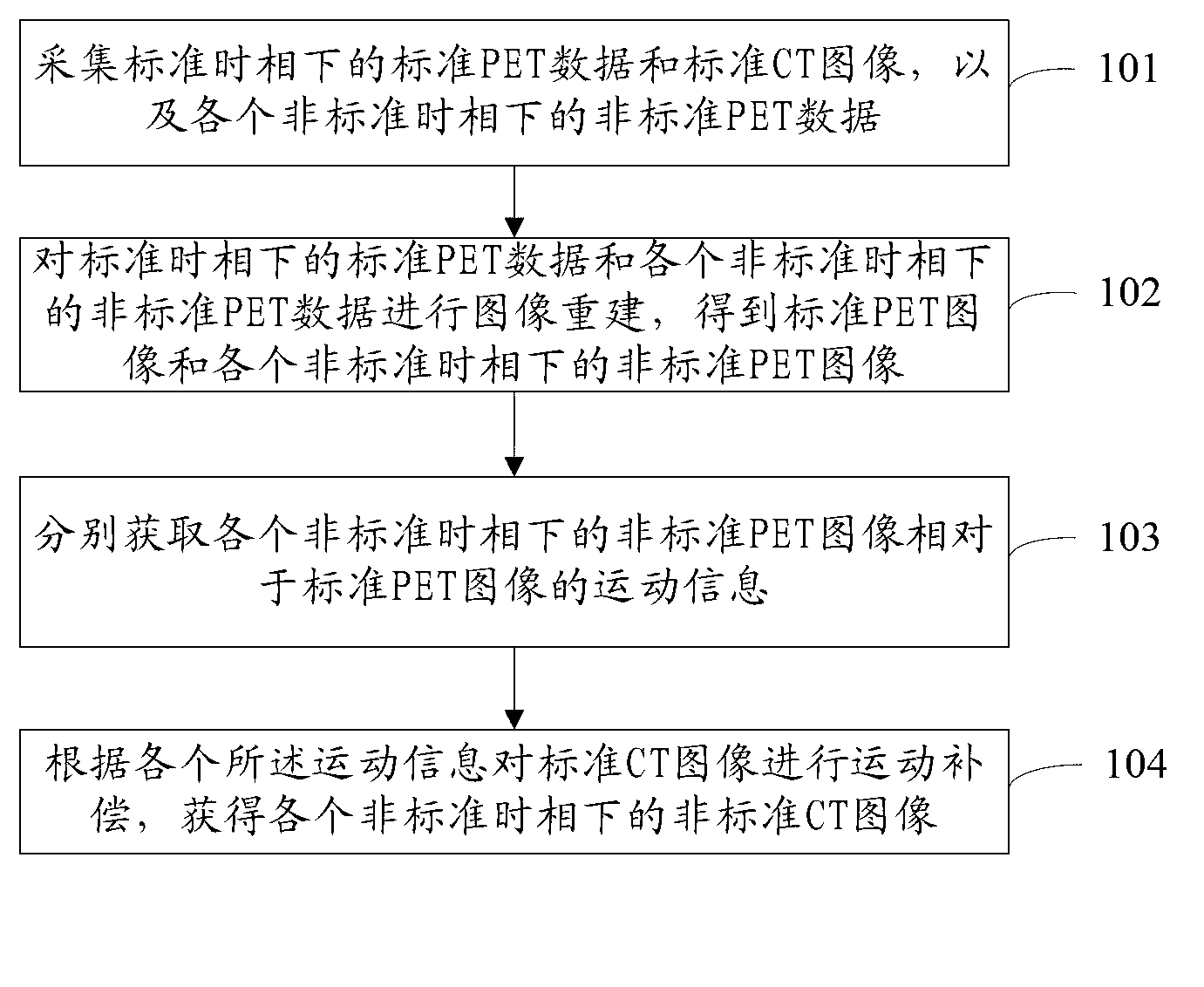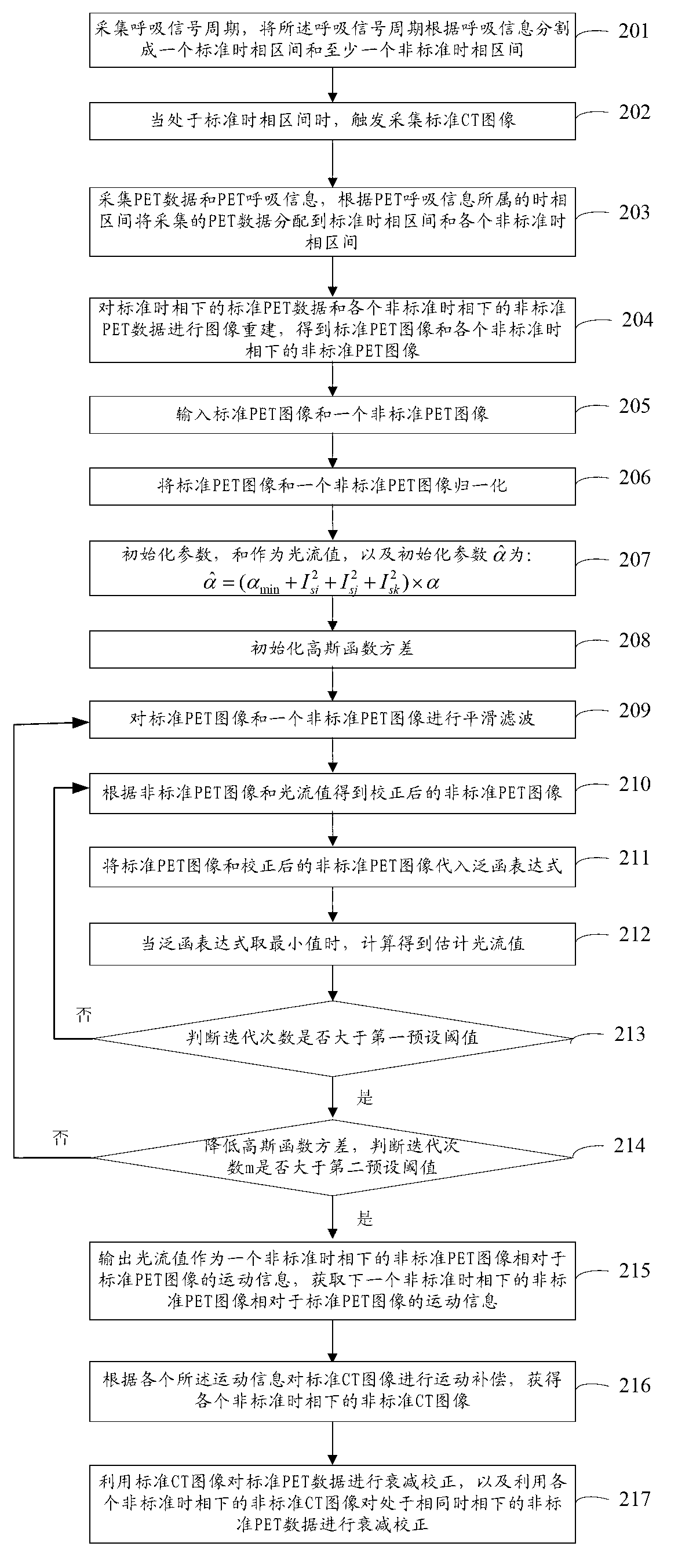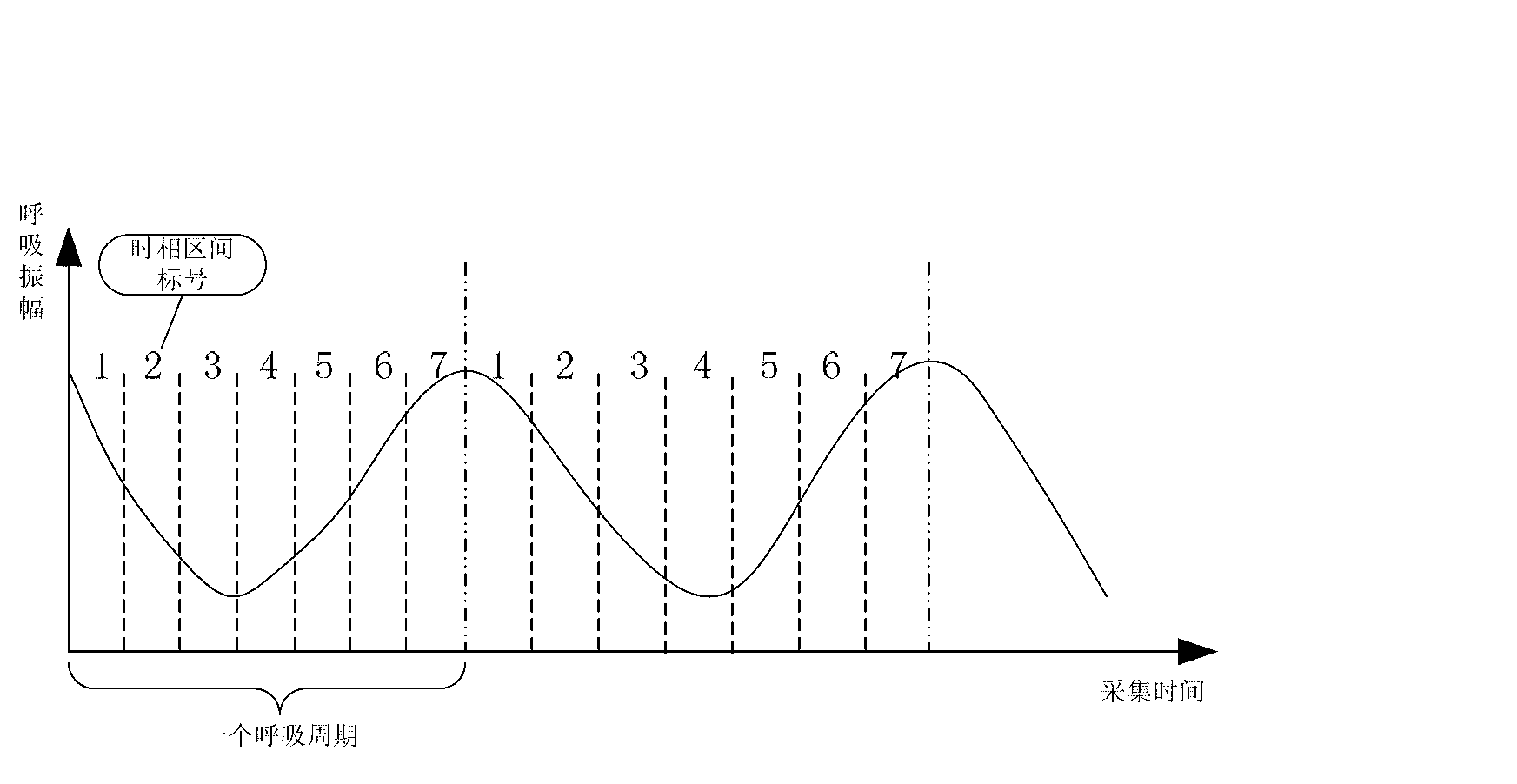Attenuation rectifying method and system
An attenuation correction and corrected technology, applied in the field of image processing, can solve problems such as physical harm to patients, inability to match organs at acquisition time, and artifacts in PET images.
- Summary
- Abstract
- Description
- Claims
- Application Information
AI Technical Summary
Problems solved by technology
Method used
Image
Examples
Embodiment 1
[0143] figure 1 It is a flow chart of Embodiment 1 of an attenuation correction method in the present invention, including:
[0144] Step 101: collecting standard PET data and standard CT images in standard time phases, and non-standard PET data in various non-standard time phases.
[0145] Positron Emission Tomography (PET) data is the data received by PET scanning equipment after scanning the patient's organs.
[0146] The PET data under the standard time phase and the PET data under each non-standard time phase are PET data collected in one respiratory cycle. When the standard time phase is in one respiratory cycle, standard CT images are collected.
[0147] A respiratory cycle is divided into multiple time phase intervals according to the respiratory information, generally 6-8. The breath information is time information or amplitude information. The standard time phase is a time phase interval in a breathing cycle, which can be set according to the actual situation. No...
Embodiment 2
[0203] figure 2 It is a flowchart of Embodiment 2 of an attenuation correction method of the present invention. Compared with Embodiment 1, in Embodiment 2, a multi-scale non-rigid matching method is used to obtain motion information, specifically including:
[0204] Step 201: collect the respiration signal cycle, and divide the respiration signal cycle into a standard time phase interval and at least one non-standard time phase interval according to the respiration information.
[0205] Breath information includes time information or amplitude information.
[0206] Use the respiratory gating device to collect a respiratory signal cycle, and divide a respiratory signal cycle into multiple time phase intervals according to the respiratory information. There are the following two methods:
[0207] The first method: split according to time information
[0208] image 3 It is a schematic diagram of dividing a respiratory cycle into multiple time phase intervals according to ti...
Embodiment 3
[0265] Figure 5 It is a structural schematic diagram of Embodiment 3 of an attenuation correction system of the present invention, which is a system corresponding to the method of Embodiment 1, including:
[0266] The acquisition module 501 is configured to acquire standard PET data and standard CT images in standard time phases, and non-standard PET data in various non-standard time phases.
[0267] The image reconstruction module 502 is configured to perform image reconstruction on standard PET data in standard phases and non-standard PET data in various non-standard phases to obtain standard PET images and non-standard PET images in various non-standard phases.
[0268] The motion information obtaining module 503 is configured to respectively obtain motion information of the non-standard PET image in each non-standard time phase relative to the standard PET image.
[0269] The motion information acquisition module 503 specifically includes:
[0270] An image input unit 5...
PUM
 Login to View More
Login to View More Abstract
Description
Claims
Application Information
 Login to View More
Login to View More - R&D
- Intellectual Property
- Life Sciences
- Materials
- Tech Scout
- Unparalleled Data Quality
- Higher Quality Content
- 60% Fewer Hallucinations
Browse by: Latest US Patents, China's latest patents, Technical Efficacy Thesaurus, Application Domain, Technology Topic, Popular Technical Reports.
© 2025 PatSnap. All rights reserved.Legal|Privacy policy|Modern Slavery Act Transparency Statement|Sitemap|About US| Contact US: help@patsnap.com



